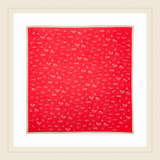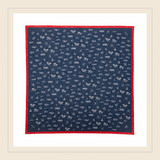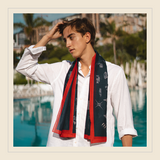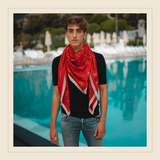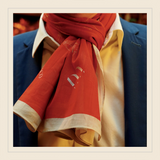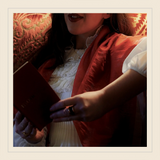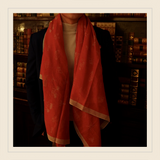An inspired artist
Lulled by the sun of southeastern France, this young illustrator quickly learned to play with light and shadow. Today, she lives in Paris where the summer waves of her childhood constantly influence her work and her good mood. After proving herself for other big brands, she welcomed a collaboration with Monoïkos 1297 with enthusiasm.
A note of history
The Principality of Monaco now has 9 neighborhoods:
La Condamine is the commercial neighborhood of the Principality. It is renowned, among other things, for its gentle way of life, its market, its many shops, the historic port of Monaco: Port Hercule and for being the place of departure and arrival of the F1 Grand Prix on Avenue Albert 1er.
The Fontvieille neighborhood was built on the sea in the 1970s (between 1966 and 1973) by HSH Prince Rainier III. The former industrial area of Monaco, it is home to the Louis II Stadium, the Port of Fontvieille (Monaco's second port), the Princess Grace Rose Garden and the Fontvieille Chapiteau, also created and designed on the initiative of Prince Rainier III to host the International Circus Festival of Monte Carlo, a world reference for Circus Arts.
The Jardin Exotique, located at the western edge of Monaco, is one of the gateways to Monaco and is home to the extraordinary Jardin Exotique of Monaco, built on the initiative of Prince Albert 1st.
Larvotto, with its direct access to the beaches, is the seaside neighborhood of Monaco. It offers the opportunity to stroll close to the sea but also the possibility to attend prestigious events in the famous Salle des Etoiles du Sporting or to visit magnificent exhibitions at the Grimaldi Forum.
The Moneghetti dominate the Principality. It is a residential area with splendid combined views of the Principality and the sea, the Princess Antoinette Park and the Museum of Anthropology founded by Prince Albert I in 1902 to preserve the remains of the dawn of humanity.
Monaco-Ville, also known as the Rock, is located "on the rock" of the Principality. It is considered the historical center of Monaco. Its streets lead to the famous Place du Palais where the Prince of Monaco lives, the Oceanographic Museum and the Cathedral of Monaco...
Monte-Carlo is its most famous district, so much so that it is sometimes confused with the entire country, or considered - wrongly - as its capital. Famous for its casinos, its prestigious hotels and restaurants and its many luxury stores that make this area one of the most popular in the Principality.
The Ravin de Sainte Dévote, Monaco's smallest district, is home to the church of Sainte Dévote, the patron saint of Monaco. The story goes that the boat, which was carrying her tortured body to Africa, was caught in a storm and guided by a dove to the shore of what would later be called Monaco.
La Rousse, the eastern entry point to the principality and also better known as Saint Roman. This neighborhood was home to the Monaco Mills in the 18th century, when the main resource of the Monegasque people was olive oil production.
A STOLE OF EXCEPTION
Monoïkos 1297 stoles are 100% made of cotton and manufactured in France.
The detail making the difference, our requirement of quality passes by perfect finishings, achieved by craftsmen trained to excellence for the confection.
Its box, its case, red, the color of Monaco, is made in the Principality of Monaco from FSC certified paper from responsibly managed forests.
The « Les Quartiers » stole-scarf-pareo: a light, fine and extremely soft cheche that celebrates the Principality of Monaco in drawing.
Around the neck, around the hips, the Principality surrounds you from all sides.
The Cotton
The cotton in this garment has been carefully chosen.
Cotton is a natural, vegetable fiber and one of the oldest and most widely used fibers in the world.
Like most natural fibers, cotton is a breathing material. It has the particularity of not being too hot in summer and of being very pleasant in winter. A stole made of cotton will not soak up your sweat and will always remain very comfortable to wear.
In order to preserve its quality, we recommend you to wash this stole with a soft detergent at 30°C or even better to wash it by hand with a teaspoon of white spirit vinegar and let it dry flat or to entrust its care to a specialist.


